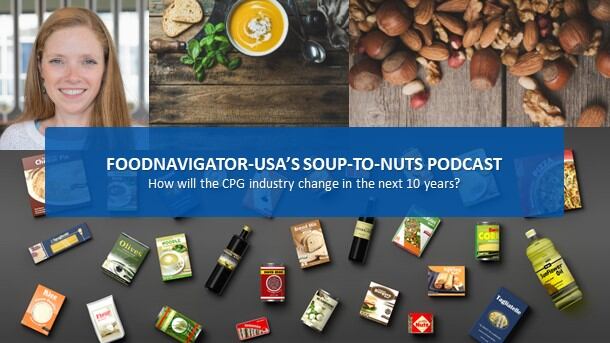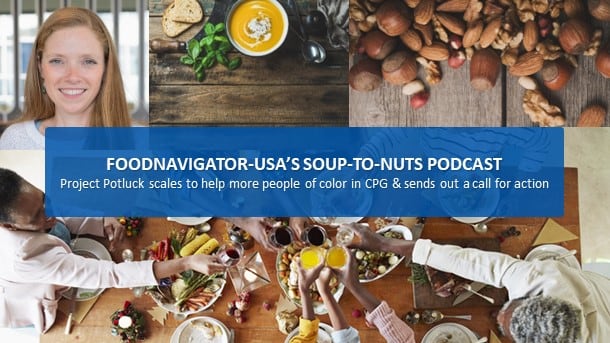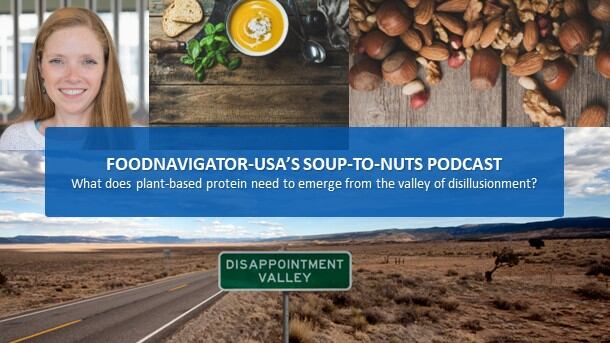The chaotic pace of change since the beginning of the pandemic and during the following economic upheaval that left many businesses scrambling is nothing compared to what Kasey Lobaugh, chief innovation officer for Deloitte’s consumer industry says is in store for the CPG space in the next ten years.
Based on his extensive 18-month examination of the future of the consumer industry and collaboration with more than 800 industry leaders, which he details in the recently published report, Buying Into Better: The Future of the Consumer Industry, Lobaugh said he and his team identified more than 100 change-factors that they organized into six forces influencing the direction of the CPG space. To fully understand their impact and how to harness their potential, the team also identified three primary business dimensions through which to filter and analyze the potential impact of each force.
In this episode of FoodNavigator-USA’s Soup-To-Nuts podcast, Lobaugh shares each of the six macro forces shaping the future of the CPG industry and explores their implications through these three primary business dimensions. And while he stops short of predicting the future, he offers a road map to help industry stakeholders chart a path alongside consumers to a better future.
[Editor’s note: Never miss an episode of FoodNavigator-USA’s Soup-To-Nuts podcast – subscribe.]
Charting change
In turbulent periods, like the current one, it can be difficult to see out towards the horizon past the immediate fires of inflation, broken supply chains and labor challenges, but Lobaugh explains he took a ten-year view when researching what the future of the CPG industry may hold.
“If you’re in the consumer industry, certainly you may be feeling there’s been a lot of disruption based on pretty radical changing consumer behaviors that happened throughout the pandemic,” alongside changes in technology, the climate, economics, policy and more, Lobaugh said.
But looking beyond immediate challenges to the next ten years, Lobaugh says the main drivers for change in CPG will be the changing consumer, an evolving society and culture, exponential tech, radical industry upheaval, extreme climate change and shifting economies, policy and power.
And to fully understand how each of these will play out, Lobaugh examines them through a lens of markets, models and mechanics.
The changing consumer
The first of the six forces identified by Deloitte as fundamental to the future of the consumer packaged goods space is the consumer, who Lobaugh explains is becoming more diverse, which calls into question the effectiveness on designing products for and communicating to the mass market.
He explains there is increased racial, ethnic, sexual and gender diversity and shifts in the overall population’s age with dropping birth rates, as well as changes geographically where consumers are concentrated – all of which means who has money, what they need when and where they spend it is also shifting.
“What it paints a picture of is a future with a dramatically more fragmented consumer base,” which is forcing the CPG industry to evolve beyond the mass production, distribution and marketing model on which it was founded to a more micro, personalized approach, he said.
Societal and cultural shifts are changing when consumers buy products
The second force of change identified by Deloitte is a natural progression from the first but zoomed out from the individual to the societal and cultural level.
Lobaugh explained standard life events around which certain purchases were focused, such as marriage, homeownerships, birth rates, are changing and with it when or if consumers buy the packaged goods that traditionally accompanied those milestones.
Tech is accelerating change
As cultural standards breakdown and diversify, Lobaugh says this will further accelerate the shift from mass to micro, which he notes may sound linear but is not – especially as society and time layer in the third force for change: exponential tech.
He explains that the technology changes influencing the CPG market are not limited to infotech, but include advances in artificial intelligence, biotech, material science, as well as drones, automation, gene editing, quantum computing.
This layers in an increased amount of complexity that CPG manufacturers need to consider when innovating and producing products, and he recommends they start with adopting predictive analytics to keep up with the pace of change.
Radical industry upheaval on the horizon
As the CPG industry scrambles to use tech to meet fast-evolving consumer needs, Lobaugh predicts radical industry upheaval – the fourth force for change – will begin to shape how businesses and consumers interact.
He explained that the steady growth of consumer spending over the last ten years is becoming more fragmented as competition for shoppers’ attention and money increases – not just within CPG but from outside industries as well.
For example, consumers increasingly are diverting funds they once spent on CPGs to experiences.
Shifting economies, policy and power
This upheaval is triggering the fifth force for change, which is shifting economies, policy and power, which Lobaugh explains increasingly requires more flexibility.
“When we look at shifting economics, policy and power, really what you start to surface there is the degree of uncertainty that we're facing right now that perhaps we haven't traditionally faced, there's a broad collection of topics that pertain to, you know, the economic policies that that governments across the globe are, are pursuing right now tightening monetary policy, but there's also policy that's happening, you know, within the country.
“So for example, the recent inflation Reduction Act, you know, has a lot of stipulations and a lot of incentives, you know, within it, that actually drive opportunity, but they also drive drive behavior,” he said.
Extreme climate change is a wild card
The last force for change – extreme climate change – is a bit of a wild card in how it will influence the CPG industry in the next ten years, say Lobaugh, who notes there are two sides to this equation that are positive and negative.
Bad news first: rising greenhouse gases are threatening the safety, quality of life and longevity of humans and the CPG industry is responsible for 60% of all greenhouse gases.
“The responsibility lies with us. If we are going to address this issue we have to address it and we have to help the consumer understand their role in addressing it,” Lobaugh said.
On the positive side, he added, technological advances are making it easier to be greener and consumers – so far – are willing to help cover the cost of creating more environmentally friendly products.
Where to begin?
Given these forces will impact individual CPG companies differently, Lobaugh said businesses will need to blaze their own path forward, but a good first step is to invest in predictive analytics to help understand the impact and direction of each force on their business, category and competitive landscape.
Companies can also learn more by checking out Deloitte’s full report: Buying Into Better: The Future of the Consumer Industry.




